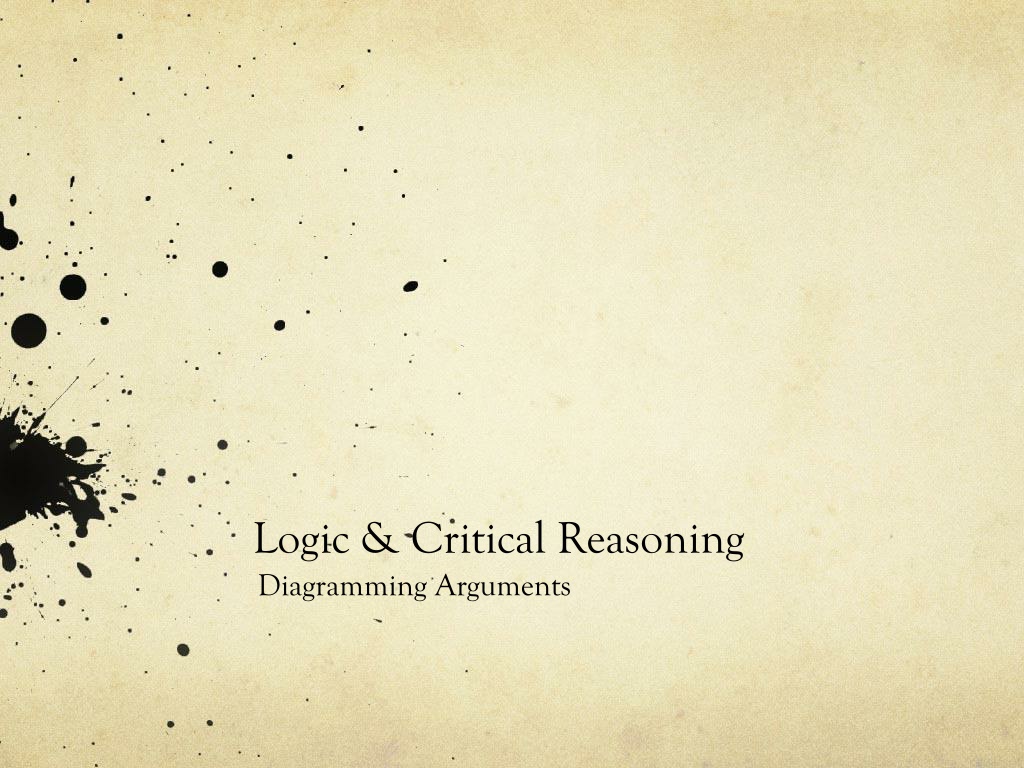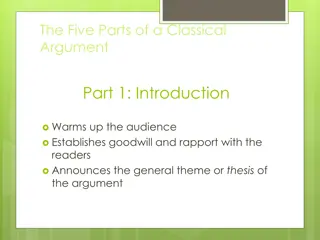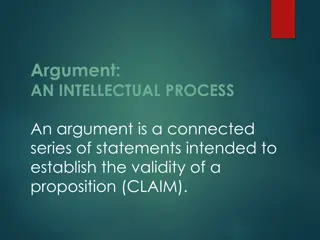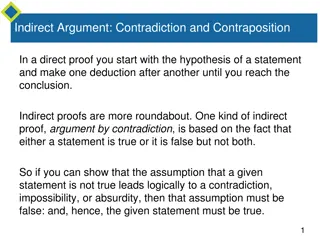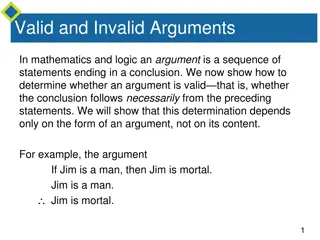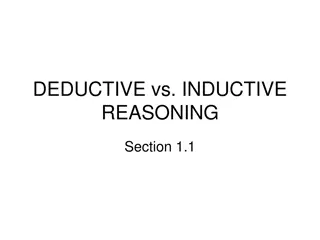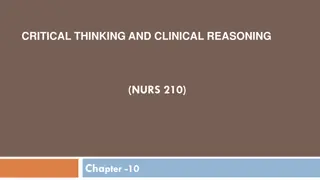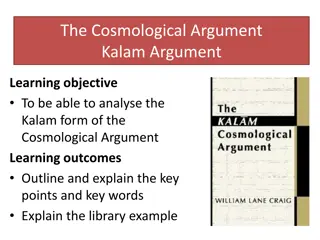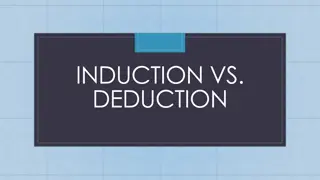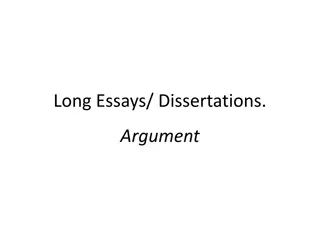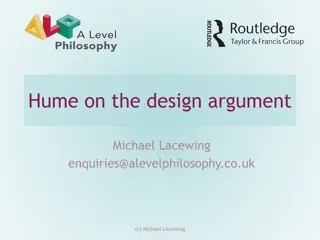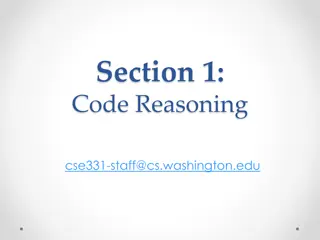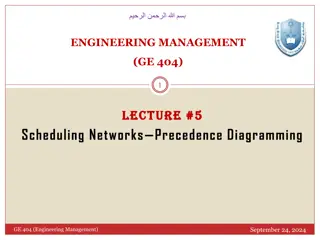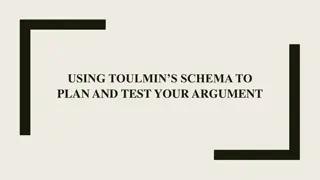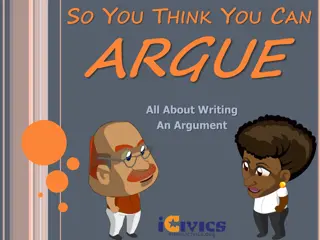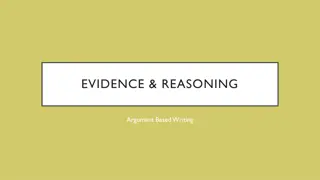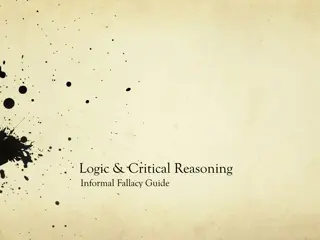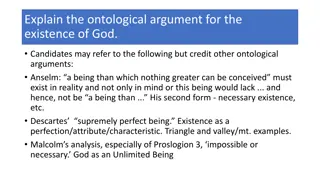Exploring Argument Structure and Diagramming in Critical Reasoning
Understanding the two types of argument structures - atomic and complex, with examples and diagrams. Learn how argument diagrams visually represent the structure of an argument, identify significant units like premises and conclusions, and distinguish main conclusions from sub-conclusions. Dive into the basics of constructing argument diagrams for effective analysis in critical reasoning.
Download Presentation

Please find below an Image/Link to download the presentation.
The content on the website is provided AS IS for your information and personal use only. It may not be sold, licensed, or shared on other websites without obtaining consent from the author. Download presentation by click this link. If you encounter any issues during the download, it is possible that the publisher has removed the file from their server.
E N D
Presentation Transcript
Logic & Critical Reasoning Diagramming Arguments
Two Types of Argument Structure Arguments can either be complex or atomic. An atomic argument has a single conclusion with a single set of premises supporting that conclusion. A complex argument has a single main conclusion, but multiple sets of premises supporting sub conclusions that form a set of premises for the main conclusion. Arguments have premises and a conclusion, as well as the feature of being either atomic or complex.
Example of Atomic Argument 1. All dogs are mammals. 2. All mammals are animals. 3. So, all dogs are animals. Two premises leading to a single conclusion. No sub- arguments are present.
Example of a Complex Argument The chef stole the knife or the butler did. 1. Because the chef was out of town, he could not have stole the knife. 2. So, the butler stole the knife. 3. The main conclusion is (3). However, (2) contains an argument that supports the opposite of the underlined part of (1). So, there is sub argument that is used to support the italicized part of (1) that is also the conclusion.
A diagram of the argument 1: The chef stole the knife or the butler stole the knife. 2: The chef was out of town. 3: The chef could not have stolen the knife. 4: The butler stole the knife. 2 3 + 1 4
Argument Diagrams I An argument diagram is a way of visually representing the structure of an argument. The goal of a diagram is to discern what the main conclusion is, what the sub-conclusions are of any atomic arguments, and what the premises and conclusion of each sub-part is. An argument diagram is a type of coarse grained analysis. It cannot analyze things as clearly as first-order logic. However, it does provide a good first pass at figuring out the structure of an argument.
The basics of argument diagrams A diagram has two parts. One part is the identification of the significant units of the arguments, such as premises and conclusions. We use numbers to identify the various units of an argument. Another part is the identification of jointness and disjointness. The final part is the identification of the main conclusion form other sub-conclusions in a complex argument.
Identifying Units Procedure: First identify all premise and conclusion indicators. Second, identify the main conclusion and all premises. Third, determine if there are any sub-arguments, and what their conclusions are. Number every premise and conclusion. Use the following form: 1: , 2: . , 3: Determine which premises are working together and which premises are independent of one another.
Determining Jointness and Disjointness I A set of premises jointly supports a conclusion when the author intends it to be the case that all of the premises collectively provide evidence for the conclusion, but that no subset of the premises does so. A set of premises disjointly supports a conclusion when the author intends it to be the case that some subset of the premises supports the conclusion, and perhaps that even multiple subsets support the conclusion.
Determining Jointness and Disjointness II If you believe that two or more premises jointly support a conclusion then put + sign between the numbers, such as in 1 + 2 . And place the whole over the number for the conclusion: 1+2 3 If you believe that two premises are disjointly supporting a conclusion then place each premise over the conclusion. 1 2 3 3
